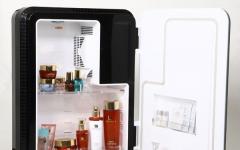crochet octopus. Scheme
HEAD: color A (turquoise)
1 row - 6 sc in KA
2nd row - 6 inc = 12
3 row - (1 sc, inc) * 6 = 18
4 row - (2 sc, inc) * 6 = 24
5 row - (3 sc, inc) * 6 = 30
6 row - (4 sc, inc) * 6 = 36
7 row - (5 sc, inc) * 6 = 42
8 row - (6 sbn, prib) * 6 = 48
9 row - (7 sbn, prib) * 6 = 54
10 row - 1 sc, inc, (5 sc, inc) * 5, 22 sc = 60
11 row - (inc, 9 sb) * 6 = 66
12 row - 2 sc, inc, (7 sc, inc) * 5, 23 sc = 72
13-22 rows /= 10 rows/ 72 sc
23 row - 3 sc, dec, 7 sc, dec, 25 sc, (dec, 7 sc) * 3, dec, 4 sc = 66
24-25 rows /= 2 rows/ 66 sc
26 row - (dec, 9 sb) * 6 = 60
27-28 rows /= 2 rows/ 60 sc
29 row - 3 sc, dec, 6 sc, dec, 18 sc, (dec, 6 sc) * 3, dec, 3 sc = 54
30-31 rows /= 2 rows/ 54 sc. Stuff the head, then stuff in the course of knitting.
32 row - (dec, 7 sbn) * 6 = 48
33-34 rows /= 2 rows/ 48 sc
35 row - 4 sc, dec, 5 sc, dec, 11 sc, (dec, 5 sc) * 3, dec, 1 sc = 42
36 row - 42 sc; in the course of knitting, MARK the 17th loop - this is the center of the head, a guideline for sewing on the eyes.
37 row - (dec, 5 sc) * 6 = 36
38 row - 1 sc, inc, 5 sc, (dec, 4 sc) * 3, inc, 5 sc, inc, 4 sc = 36
39 row - 2 sc, inc, 4 sc, (dec, 4 sc) * 3, inc, 5 sc, inc, 4 sc = 36
40 row - 3 sc, inc, 4 sc, (dec, 3 sc) * 3, 1 sc, inc, 7 sc, inc, 3 sc = 36
41 row - (8 sbn, prib) * 4 = 40
42 row - 40 sc
TENTACLES: (see diagram and photo) ATTENTION: between the tentacles in the 43rd row 5 sc on the head.
43 row - (3 sc in the head, ch 31, skip ch 1 = loop A, 1 sc in the 2nd ch from the hook, 29 sc, 2 sc in the head) * 8 = 528 (66 in each probe, including loop A)
44 row - (3 sc in the head, 30 sc in the probe., 1 sc in loop A, 51 ch, skip 1 ch = loop B, 1 sc in the 2nd ch from the hook, 49 sc, 1 sc in loop A, 30 prs on the probe, 2 prs on the head) * 8 = 1344 (168 in each probe, including loop B)
45 row - mark the beginning of each tentacle; (1 sc, dec, 62 sc on the probe, (2 sc, inc) * 6, 1 sc, inc in loop B, 1 sc, (inc, 2 sc) * 6, 62 sc on the probe, kill on the head )* 8 = 1432 (179 in each probe).
color A (turquoise)
1 row - (leave a ponytail outside ~ 10 cm) 6 sc in KA
2nd row - 6 inc = 12
3 row - (1 sbn, prib) * 6 = 18, zab.
change to color B (gray)
4 row - 18 sl-st for ZSP = 18
5 row - for PSP (2 sbn, prib) * 6 = 24
6 row - (3 sc, inc) * 6 = 30
7 row - (4 sbn, prib) * 6 = 36
8 row - (8 sbn, prib) * 4 = 40
9 row - 40 sc = 40
TENTACLES: see photo
10 row - = 66 in the tentacle, including loop A.
[...] repeat 7 more times = 528 in the whole row
NOTE for row 11:
gr.4 s2n knit with a thread of color C (apricot) \u003d suction cups. (see photo)
I knitted a small octopus and did not cut this thread, but stretched it along the chain from the VP (see photo).
But if you are knitting a large toy, then it is better not to waste the yarn in vain and cut the thread each time and fasten it again.
11 row - = 128 in the tentacle, including the loop.
[...] repeat 7 more times = 1024 in the whole row
NOTE for row 12:
gr.3 s2n knit with a thread of color C (apricot) \u003d suction cups. (see photo)
After the 11th row, cut off the thread with which the suction cups are knitted. In the 12th row in each tentacle, fasten the thread and cut it again.
12 row - mark the beginning of each tentacle = 179 in in the tentacle
[...] repeat 7 more times = 1432 in the whole row
tentacles (inserts) 8 pieces
It is best to immediately connect each insert with tentacles. You can, of course, tie everything at once, but then it will be difficult to guess how long the thread should be left for tying.
We knit in rotary rows (see diagram)
1 row - ch 5, skip ch 1 (loop A), 1 sc in the 2nd ch, 3 sc = 4
2 row - 1 st, inc in the 1st sc, 3 sc, 1 sc in the loop A, 5 ch, skip 1 ch (loop B), 1 sc in the 2nd ch, 3 sc, 1 sc in the loop A, 3 sc, inc = 21
3 row - 1 st, inc, 9 sb, 1 sb in loop B, 5 ch, skip 1 ch (loop C), 1 sb in the 2nd ch, 3 sb, 1 sb in loop B, 9 sb, inc = 33
4 row - 1 st, inc, 15 sb, 1 sb in the loop C, 15 sb, inc = 35, do not cut the thread !!! or leave very a long tail for bonding with tentacles.
These knitted octopuses are considered useful for newborns and premature babies.

To knit an octopus, we need:
- some cotton yarn of one or two colors for the octopus itself, as well as white and black (or other dark) for the eyes,
- suitable hook (I have No. 2),
- hypoallergenic filler (I have sintepuh),
- piece of cotton jersey
In this work, we use the following notation:
VP - air loop
RLS - single crochet
SS - connecting post
2СБНв1 - 2 single crochet knitted in one column of the previous row (increase)
2СБНtogether - 2 single crochet knitted together (reduction)

First, we will knit the lower part of the octopus. We start knitting with a ring in which we make the first 6СБН. You can use an amigurumi ring to start knitting. I do this: we knit 3VP (the first of them will be the base loop, and the other two will be lifting loops), in the first of them we knit 5СБН, we connect it into a ring with the help of SS. We got the first row of six columns.
Knitting goes in a circle. Each row starts with two air loops lifting (replacing the first single crochet) and ends with closing the row into a ring using a connecting column.
1 row - 6SBN
The lower part is ready, fix the thread, cut it and proceed to the main part.

1 row - 6SBN
2 row - 2СБН in each column of the previous row (we get 12СБН)
3 row - * 1СБН, 2СБНв1 * 6 times (we get 18СБН)
4 row - * 2СБН, 2СБНв1 * 6 times (we get 24СБН)
5 row - * 3СБН, 2СБНв1 * 6 times (we get 30СБН)
6 row - * 4СБН, 2СБНв1 * 6 times (we get 36СБН)
7 row - * 5СБН, 2СБНв1 * 6 times (we get 42СБН)

Having reached the desired diameter, we knit several rows without increments
8-12 row - 42СБН

Now we start narrowing
13 row - * 5СБН, 2СБНtogether * 6 times (we get 36СБН)
14-16 - 36SBN
17 row - * 4СБН, 2СБНtogether * 6 times (we get 30СБН)
18-19 row - 30SBN
20 row - * 3СБН, 2СБНtogether * 6 times (we get 24СБН)
21-22 row - 24SBN

Let's stop here, we do not break the thread. Now you need to fill the part. If you do not knit very tightly and are afraid that the filler may come out to the surface when washing or using the toy, sew a bag out of cotton jersey in the shape of an octopus piece. Fill this bag with filler and sew. And only then insert this bag into a knitted item.
Now you need to connect the main and bottom parts. To do this, we combine them and knit one row in a circle with single crochets, simultaneously picking up the loops of both parts.

This is the detail we got.

Now let's start knitting tentacles. With yarn of a different color we attach to the last row of the main part, we make 50 air loops. Then in each of the loops of this chain (starting from the second in a row from the working loop) we make 2СБН. Our chain will begin to twist into a spiral.

Returning to the beginning of the chain, we make 3СБН in the last row of the main part and knit the next VP chain ... And so in a circle, there will be 8 such spirals.

This is what the bottom of the octopus and tentacle looks like.

Now let's connect the eyes. With a black (or other dark) thread we will make 1 circular row - 6СБН in the ring. The second row - with a white thread: 2СБН in each column of the previous row (we get 12СБН)
We leave the thread longer and with its help we sew the eye to the octopus with small secret stitches. Similarly, we knit and sew the second eye.

And now our octopus is ready! The size of the resulting toy: 13 cm (body 6 cm)
- use cotton yarn, it is hypoallergenic and can be washed in hot water. Wool can leave lint on the baby's arms, and besides, it can behave inappropriately when washed. For the same reason, do not use wool for stuffing, only hypoallergenic synthetic filler that is not afraid of water and high temperature.
- Do not sew (and certainly do not glue) small hard parts, beads, buttons to the toy ... The toy must be safe.
- If you do not use a knitted bag for filler, knit as tightly and neatly as possible. knitted fabric should be free of gaps and holes.
- The size of the toy will depend on the thickness of the yarn, the selected hook size and the density of your knitting. If you understand that the toy turns out to be too large - reduce the rows with increments - for example, stop at the diameter of the part not 42SBN, but 36SBN. Accordingly, the number of rows with decreases will decrease. Also, if the tentacles are too long, reduce the number of air loops in the chain.
Happy knitting! And let your octopus warm and soothe the baby!
A little about the history of the project " Miracle Octopuses"
Miraculous octopuses first appeared in Denmark, where one mother knitted such a talisman for her child, who was born ahead of schedule. The result surprised everyone: the child became calmer and his breathing returned to normal. Unusual "amulets" help kids in rehabilitation and nursing period. Doctors see similarities between the shape of the octopus' tentacles and the umbilical cord. The child, holding the tentacles in his hand, feels the security that he experienced while in the womb.
Miracle octopuses are needed and help in the nursing process.
A very common problem among all prematurely born babies during nursing is the tearing out of the probe through which the baby feeds. Active children constantly try to pull it out and it happens that nurses are forced to put the probe several times a day, thereby causing significant anxiety to the child. Holding on to the tentacles of the octopuses, the child tends to pull out the probe much less.
For older children with neurological disorders, doctors offer octopuses for developmental classes fine motor skills hands, and, as practice shows, many of the children calm down and relax.
This cute octopus is crocheted. If you are not afraid of the monotonous work of knitting as many as eight octopus tentacles, you can get to work. I knitted a swim ring for the octopus, for some reason the child really liked this idea. In this masterclass you will find detailed description schemes for working on a toy and, of course, you can easily repeat the whole process, regardless of whether you are an experienced or a beginner needlewoman.

To crochet an octopus, you need:
acrylic yarn in turquoise, white and black colors (for a circle - also red) 100 g = 300 m;
filler for stuffing toys (silicone, sintapon, etc. - what is);
sewing threads in black, turquoise (and red, if we are talking about a circle);
crochet hook 2 mm;
sewing needle.
Crocheted octopus: job description
Head
We start knitting from the head. I immediately divided this hemisphere into eight parts, according to the number of tentacles.
1 row. Around the amigurumi ring - 8 tbsp. without a crochet.

2 row. According to 2 tbsp. without a crochet in each column of the previous row. Only 16 st.

3 row. According to 2 tbsp. single crochet in every second loop of the previous row. Total 16 + 8 = 24 st.

4 row. A row of single crochets.

5 row. According to 2 tbsp. single crochet in every third loop of the previous row. Total 24 + 8 = 32 st.

6 row. A row of single crochets.

7 row. According to 2 tbsp. single crochet in every fourth loop of the previous row. Total 32+8=40 art.

8 row. A row of single crochets.
9 row. According to 2 tbsp. single crochet in every fifth loop of the previous row. Total 40 + 8 = 48 st.


11 row. According to 2 tbsp. single crochet in every sixth loop of the previous row. 48+8=56 st.

12 row. A row of single crochets.

13 row. According to 2 tbsp. single crochet in every seventh loop of the previous row. 56+8=64 st.

14-24 rows. Rows of single crochets without increments. Finish the last row with a blind loop, fasten the thread and cut.
Bottom
1-5 rows - as at the head.
6 row. According to 2 tbsp. single crochet in every fourth loop of the previous row. Total 32+8=40 art.

7 row. According to 2 tbsp. single crochet in every fifth loop of the previous row. Total 40 + 8 = 48 st.

8 row. According to 2 tbsp. single crochet in every sixth loop of the previous row. Total 48 + 8 = 56 st.

9 row. According to 2 tbsp. with single crochet in every seventh loop of the previous row. Total 56 + 8 = 64 st.

10 row. A row of single crochets.

tentacles
Despite the fact that the footage and length of white and turquoise yarn are the same, they have different manufacturing companies and white is still a little thinner than turquoise. This is an unprincipled moment, but it is thanks to him that the tentacles independently curl more strongly than if the yarn were of the same thickness.

Despite the difference in thickness, both the white and turquoise parts of the tentacles are knitted according to the same pattern: a chain of ch 33. plus 3 v.p. lifting; then along the chain - 27 tbsp. with a crochet, 5 tbsp. without a crochet. In the last loop - 5 tbsp. without a crochet, then - symmetrically along the other side of the chain from the VP: 5 tbsp. single crochet, 27 st. with a crochet + 1 tbsp. with a crochet in the first ch. lift. We fasten the thread and cut it off.

For each tentacle we knit such details in two colors: white and turquoise. Total - 8 pcs. each color. Then, with a turquoise thread, we tie the white and turquoise parts folded to each other inside out along the perimeter with single crochets.


From black yarn: 6 tbsp. single crochet around the amigurumi ring. Tighten the ring, close the row with a blind loop, cut the ends to small ones.

We embroider highlights on the eyes with white yarn, literally one or two stitches at a time.
Assembling a crochet octopus
Sew on the eyes. I have the center of the eyes located between the 13th and 14th rows of the head. The distance between the eyes is 10 st. without a crochet.

I came up with the following calculation: the width of one tentacle corresponds to 6 tbsp. without a crochet on the head of an octopus. Those. between the tentacles will be 2 tbsp. single crochet free space. Based on this, I began to connect the bottom and the head, tying them in a circle with single crochets according to the following pattern: * 2 tbsp. without a crochet through the bottom and head, connecting them, 6 tbsp. single crochet just around the edge of the head piece*, repeating from * to * until the end of the head. A little before reaching the end, I stuffed my head well with filler. Thus, I connected the head and the bottom, while leaving holes for sewing in ready-made tentacles.

We insert the wide edge of the tentacle into the hole and sew it in with a turquoise thread so that with one movement of the needle the edge of the bottom, and the head harness, and, of course, the tentacles themselves are sewn. Crocheted octopus is ready. We knit a circle for him.

From red yarn: ch 14, close into a ring, continue knitting in a circle with single crochets. 15 rows of Art. single crochet in red, then - 8 rows in white. Then red again. We should get a white-red sausage, 4 fragments of each color. After that, we close the row with a blind loop, cut the thread, stuff the sausage well with filler, close it in a ring and sew it with a blind seam, loop into loop, the first and last rows.

A few photos of a knitted octopus with an elegant swim ring.






Eva Casio especially for the site Master classes in needlework
Such a cute toy - a knitted octopus!
Your child will just love it! After all, it looks like a real and fabulous at the same time. Most likely, few people had a desire to hug a real octopus! But a toy octopus is another matter! He has as many as eight "arms" for hugs !!!
I don’t know why the idea came up in my head to come up with tying an octopus. Knitting itself is a kind of mystery, like the ocean itself and all the creatures that live in it. The knitted octopus exceeded all my expectations, I hope you will also be impressed not only by the toy itself, but also by the manufacturing process.

And for the magic number "8" there is nothing better than warm white. For knitting an octopus, I used natural white color, and 100% Alpaca wool gave extraordinary softness and simplicity in knitting itself.
We will need six skeins of Alpaca yarn, the rest of the blue yarn for the eyes and stuffing for toys.

I hope that when knitting an octopus, you will feel at least a drop of what Jean-Jacques Cousteau experienced while exploring the underwater depths of the ocean!
We will need:

- 6 skeins of 100% alpaca wool for children, natural white color. Please note: I used 6 skeins for this toy, but I recommend getting the 7th. If you don't need it, you can return it to the store.
- 350 g Holofiber
- 2 meters of the remains of blue yarn, for tying the eyes.
- Circular knitting needles No. 6, 40 cm
- Hosiery knitting needles No. 6, 6 pcs
- Knitting density: 4.5 loops = 4.5 cm (knit with a double thread)
Finished Size:
Circumference of the widest part of the body: 52cm
Body height: 19cm
Tentacle length: 25cm
Body:
Cast on 6 sts with double thread on stocking needles.
Knit in a circle. When closing in a circle, make sure that the loops do not twist.
Round 1: knit the same loop, first knit behind the front wall, then knit over the back wall; thus inc 1 st (kfb) 6 times. (12 loops)
*1 persons., kfb, repeat from * to the end of the circle. (18 loops)
Round 3: *K2, kfb, repeat from * to end of round. (24 loops)
Circle 4: All facial.
Round 5: *K3, kfb, repeat from * to end of round. (30 loops)
Circle 6: All facial.
Round 7: *K4, kfb, repeat from * to end of round. (36 loops)
Circle 8: All facial.
Round 9: *k5., kfb, repeat from * to the end of the circle. (42 loops)
Circle 10: All facial.
Round 11: *K6, kfb, repeat from * to end of round. (48 loops)
Circle 12: All facial.
Round 13: *K7, kfb, repeat from * to end of round. (54 loops)
Rounds 14 and 15: Knit all.
Round 16: *k8, kfb, repeat from * to end of round. (60 loops)
Rounds 17 and 18: Knit all.
Round 19: K*9, kfb, repeat from * to end of round. (66 loops)
Rounds 20 and 21: Knit all. Switching to circular needles
Round 22: *k10, kfb, repeat from * to end of round. (72 loops)
Rounds 23-25: Knit all.
Round 26: *K11, kfb, repeat from * to end of round. (78 loops)
Rounds 27-29: Knit all.
Round 30: *K12, kfb, repeat from * to end of round. (84 loops) Tie 6 cm.
Track. Round: *K12, knit 2 together as a knit stitch (k2tog), repeat from * to end of round. (78 loops) Knit 2 rounds.
Track. circle: *k11., k2tog, repeat from * to the end of the circle. (72 loops) Knit 4 rounds.
Track. circle: *11 persons., kfb, repeat from * to the end of the circle. (78 loops) Knit 1 round.
Track. circle: *12 persons., kfb, repeat from * to the end of the circle. (84 loops) Knit 1 round.
Track. circle: *13 persons., kfb, repeat from * to the end of the circle. (90 loops) Knit 1 round.
Track. circle: *14 persons., kfb, repeat from * to the end of the circle. (96 loops) Put the body of the octopus aside, do not cut the thread.

First tentacle:
Cast on 3 double knitting needles for 6 sts, be careful when closing into a ring so that the sts do not twist.
Circle 1: all facial.
Round 2: K1, inc to the left: insert the left needle from front to back under the broach between the loops and knit it behind the back wall (m1l), knit to the end of the row, increase to the right tilt: insert the left knitting needle from back to front under the broach between loops and knit it with the front behind the front wall (m1r). (8 loops)
Round 3: K4, purl 1, knit to end of row. Round 4: K1, m1l, k3, purl 1, knit to end of row, m1r. (10 sts) Rounds 5 and 6: K4, p1, k1, p1, knit to end of row.
Round 7: K1, m1l, k4, purl 1, knit to end of row, m1r. (12 loops)
Round 8: K6, purl 1, knit to end of row.
Round 9: K5, p1, k1, p1, knit to end of row.
Round 10: K1, m1l, k4, p1, k1, p1, knit to end of row, m1r. (14 loops)
Rounds 11 and 12: K5, (p1, k1) 2 times, p1, knit to end of row.
Round 13: K6, p1, k1, p1, knit to end of row.
Round 14: K1, m1l, k5, p1, k1, p1, knit to end of row, m1r. (16 loops)
Round 15 and 16: K6, (P1, K1) 2 times, P1, knit to end of row.
Round 17: K5, (P1, K1) 3 times, P1, knit to end of row.
Round 18: K1, m1l, k4, (p1, k1) 3 times, p1, knit to end of row, m1r. (18 loops)
Rounds 19 and 20: K7, (P1, K1) 2 times, P1, knit to end of row.
Round 21 and 22: K6, (P1, K1) 3 times, P1, knit to end of row. Repeat Rounds 19-22 until the tentacle measures 25 centimeters from the tip. Leave a thread 30 cm long.

Slip 11 sts on one stocking needle and place the remaining 7 sts on the other stocking needle. Now pull the end with a needle with a wide eye, fasten the thread and hide the end inside the tentacle

Now connect the tentacle to the body using the 11 loops we have set aside. **Begin to sew with the thread that remains from the tentacle with the last 11 loops of the body from the front side. Slip the 12th loop of the body from the end onto a pin.


Remove the remaining 7 loops without knitting on a piece of blue thread, fasten the thread.

Flip your body again front side towards you, knit 12 facial loops

Set the body aside.
The rest of the tentacles.* Knit the rest of the tentacles in the same way as the first.
Sew to body, repeating from **. Repeat from * until all 8 tentacles have been sewn on (do not work 12 sts after sewing on the last tentacle). You now have 8 sts left on circular needle, 1 st between each tentacle. Make sure your safety pin is in place.

Now work with a circular needle and threads coming from the body Round 1: Cast on 1 st between the last tentacle and the first cast on on the needle. The red dot shows this location.

*Knit next st, then cast on 1 st between tentacles and cast on st.

Slip 7 sts from next tentacle onto left needle. Cut off the rest of the thread.

We knit these 7 loops (1 out, 1 persons) 3 times, 1 out. Then cast on 1 st between the tentacle and cast on. Repeat from * to the end of the circle, end with 7 loops of the eighth tentacle. (80 loops)

Round 2: *k1, p1, repeat from * to end of round. It's time to hide the remaining ends from the tentacles to work.
Round 3: *(k1, p1) 3 times, purl 2 sts together (p2tog), knit 2 sts together (k2tog), repeat from * to end of round. (64 loops) We pass to the stocking knitting needles
Round 4: *k1, p1, repeat from * to end of round.
Rounds 5 and 6: repeat round 2. Stuff our octopus with holofiber and continue knitting.
Round 7: (k1, p1) 2 times, p2tog, k2tog, repeat from * to the end of the circle. (48 loops)
Rounds 8-10: Repeat rounds 4-6.
Round 11: K1, p1, p2tog, k2tog, repeat from * to end of round. (32 loops)
Rounds 12-14: Repeat rounds 4-6.
Round 15: *P2tog, k2tog, repeat from * to end of round. (16 loops) Knit 2 rounds.
Next round: K2tog 8 times. (8 loops)
Cut the thread leaving 30 cm. Pass through 8 loops, pull off and fasten off. Pass the thread through the center of the entire body.

Eyes:
Using a needle, embroider sleeping eyes with blue thread in a few stitches. Fasten the thread and hide the ends.

Embroider the second eye.

Octopus is ready! How adorable he is!!!









